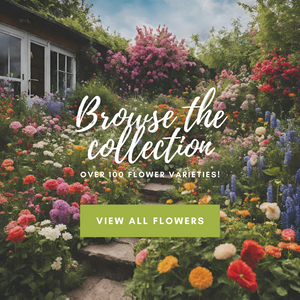
How to Grow Onions!
Onions are a staple in every kitchen! They can take an otherwise plain meal and give it great flavor. Growing onions in your garden is not difficult and is a great way to use homegrown produce in your kitchen.
Ways to Grow Onions
Onions are unique in the way that you plant them from seed, sets (bulbs), or plants. Starting onions from seed is the cheapest option, but it also requires more time and patience. Onion seeds should be started in January or February as it takes time for them to germinate and grow to transplanting size. When starting onions from seeds, they are very hardy and do not require much attention. In the spring, as soon as you can work your soil and there are no more heavy frosts in the forecast, you can plant your onions in the garden.
Starting onions from sets or bulbs is the most popular way to grow onions. You buy the bulb, which looks like a small onion that you plant in loose soil about an inch deep. In a trench you can plant the onions 4-6” apart. Fertilize your onions with a nitrogen based fertilizer, early in the growing process and stop fertilizing when the bulbing process begins. It is important to keep weed pressure down around your onions as well as giving them plenty of water.
Onion transplants come as the starter onion bulbs with there green tops already growing. You would treat these the same way as you would treat the plants you start from seeds and the bulbs. You want to plant them in a shallow trench, with about 6” between each, so they have enough room to grow. The bulb should be planted about 1 inch deep, with the foliage above the soil. This method of growing onions is common, but can just be a bit trickier than growing onions from bulbs.
Harvesting and Storing Onions
Any onions that have gone to flower, should be pulled immediately and used within a few days of harvesting. When foliage begins to yellow and flop over, the tops can be stomped down to speed up the final ripening process. To encourage drying, you should loosen the soil around the bulbs, and proceed to pull the onions when the tops are completely brown. It is important that you harvest your onions before the cold fall weather and take extra caution not to bruise the bulb. When harvesting, clip the roots and trim the tops to 1”, and set them out to dry. When storing onions indoors, keep them in a mesh bag stored from 40-50 degrees Fahrenheit.
Popular Onion Varieties
When thinking about what variety of onions you want to grow, there are a few things to consider. One is what color onions you are looking for. Typically, you will see red, white, and yellow onions. Other than color, thinking about what you want to use the onion for is essential. Certain varieties such as oversized whites, are typically used for the fresh tops. Sweet onion varieties such as Candy and Walla-Walla, are a common staple of many recipes. Also keep in mind the storage ability of the onion varieties you choose to grow, depending on how long you wish to use them following the growing season.
Give growing onions a try this year! There is still time to plant onions this spring for a late summer harvest!




Comments
Leave a comment